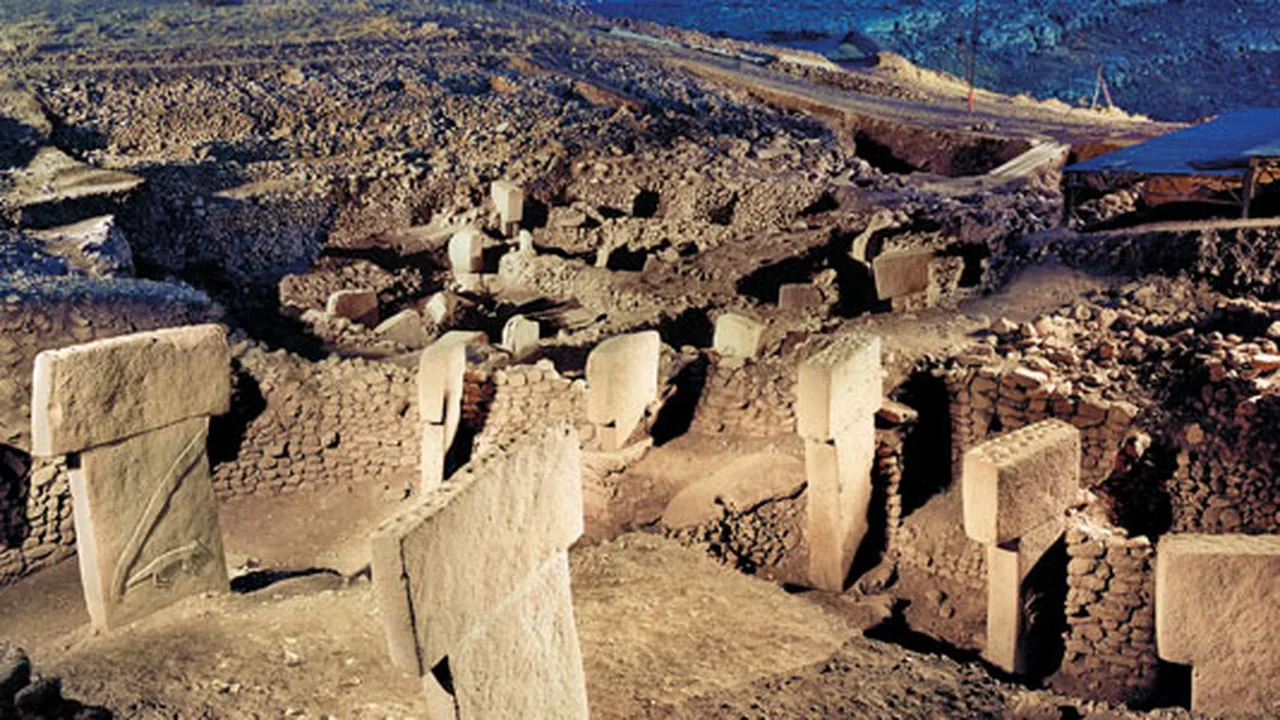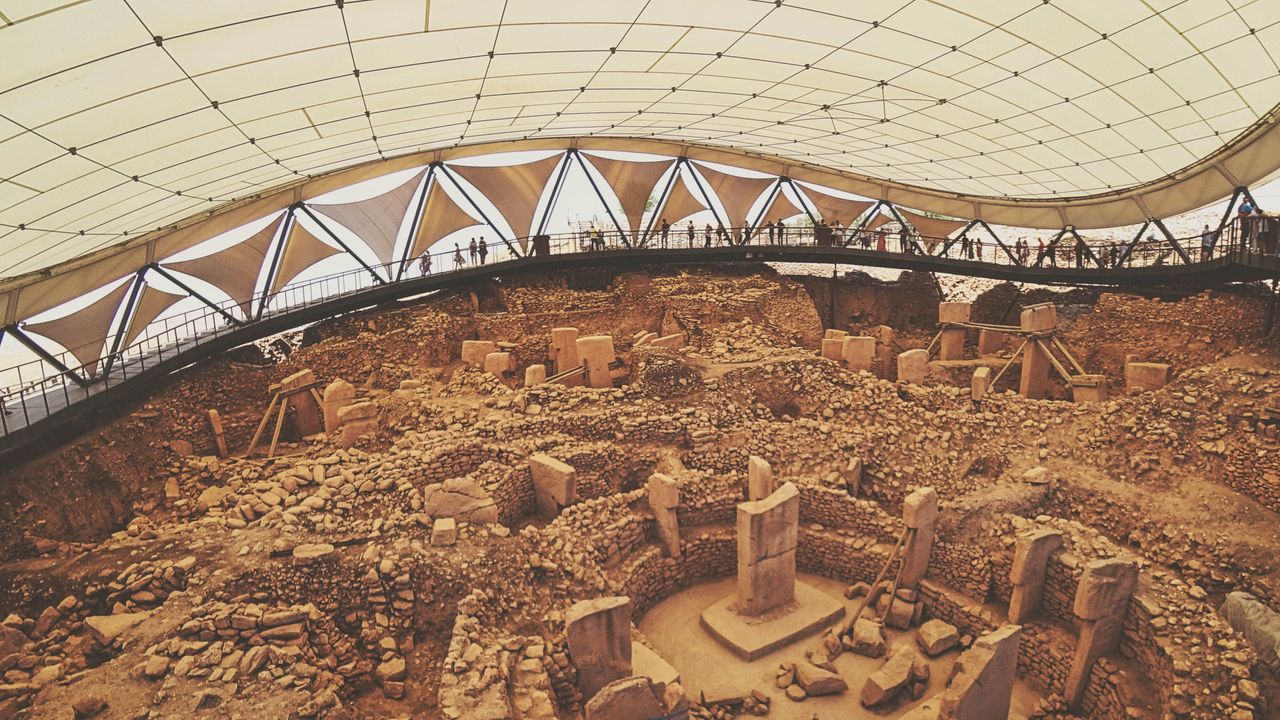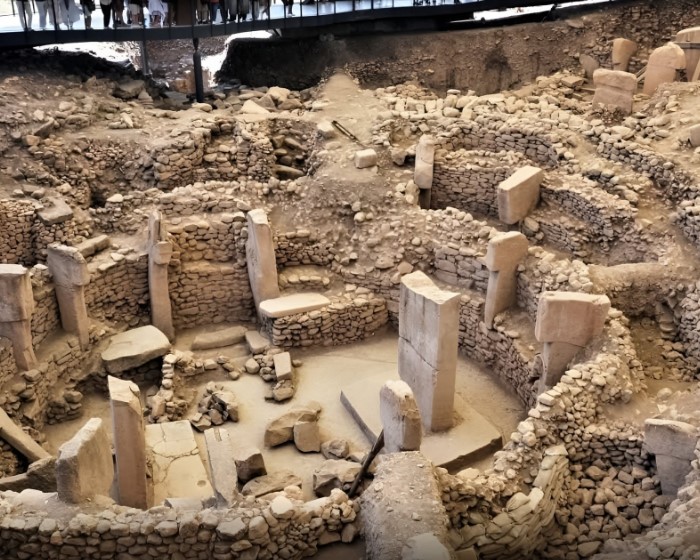Hidden among the dry hills of southeastern Turkey lies one of the most remarkable archaeological discoveries in human history — Göbekli Tepe. Dating back to roughly 9,000–10,000 B.C., this ancient site predates Stonehenge by more than 6,000 years and the Egyptian pyramids by nearly 7,000. Long before the rise of cities, writing, or agriculture, early humans came together here to build what is now recognized as the world’s first known temple complex.
Its discovery has challenged long-held assumptions about the origins of civilization, revealing that organized religion, art, and engineering existed far earlier than scholars once believed.
Unearthing an Ancient Enigma

Göbekli Tepe, meaning “Potbelly Hill” in Turkish, was first noted by archaeologists in the 1960s, but its true significance remained hidden until Klaus Schmidt, a German archaeologist with the German Archaeological Institute, began systematic excavations in the 1990s. What he and his team uncovered stunned the world: massive T-shaped limestone pillars, some weighing up to 20 tons, arranged in circular enclosures and decorated with exquisite carvings of animals — foxes, snakes, wild boars, cranes, and lions — along with abstract symbols whose meanings remain a mystery.
Radiocarbon dating placed the site’s construction in the Pre-Pottery Neolithic period (circa 9600–8200 B.C.), making Göbekli Tepe over 11,000 years old. This was an era when humans were still largely hunter-gatherers, long before the domestication of plants and animals. Yet the complexity of the architecture suggests a level of social organization, technical skill, and spiritual sophistication far beyond what was thought possible for such early communities.
Architecture Beyond Its Time
The monumental structures of Göbekli Tepe consist of multiple circular and oval-shaped enclosures, each centered around two towering T-shaped pillars surrounded by smaller ones. Archaeologists believe the central pillars represent human figures, with arms, hands, and belts carved in relief — a profound symbol of humanity’s emerging self-awareness and spirituality.
Each enclosure seems to have served as a ceremonial space, possibly dedicated to specific deities or cosmic principles. The animal carvings, executed with astonishing detail, may symbolize protective spirits or represent constellations in the night sky. Some researchers have suggested that the site’s builders possessed astronomical knowledge, aligning parts of the structure with celestial events such as solstices and star patterns.
The sheer scale of the project — with pillars quarried, transported, and erected without metal tools, wheels, or domesticated animals — required coordinated labor and planning. This suggests the presence of a complex social structure capable of organizing hundreds of people toward a shared spiritual goal.
Rewriting the Origins of Civilization

Before Göbekli Tepe’s discovery, scholars believed that organized religion and monumental architecture emerged after the agricultural revolution, when stable food supplies allowed people to form settlements and priestly hierarchies. But Göbekli Tepe turned this narrative upside down.
Here, it seems that religion came first, not agriculture. The effort to build and maintain this sacred site may have brought people together seasonally, fostering cooperation and social cohesion. Some experts argue that the spiritual and communal demands of Göbekli Tepe motivated early humans to domesticate crops and animals — leading to the rise of farming and, eventually, civilization itself.
In other words, humanity may have begun to build temples before it built towns.
A Sacred Place Intentionally Buried

One of the most intriguing mysteries of Göbekli Tepe is that it was deliberately buried around 8,000 B.C. — covered by layers of earth and debris. Whether this was done for ritual reasons, to preserve the site, or to mark the end of an era remains unknown. Ironically, this act of burial preserved the monument remarkably well, allowing modern archaeologists to study it in near-pristine condition.
Only a fraction of the site — estimated at less than 10% — has been excavated so far. Ground-penetrating radar indicates that dozens more circular enclosures still lie hidden beneath the hill, suggesting that the site may have been an ongoing ceremonial complex used for thousands of years.
The Builders of Göbekli Tepe
The identity of Göbekli Tepe’s builders remains a mystery. They left no written records, no domestic dwellings, and no clear evidence of permanent settlement nearby. Yet they demonstrated a mastery of stone carving and architectural design that would not reappear for millennia.
Analysis of nearby archaeological sites indicates that these were hunter-gatherers who likely traveled seasonally, gathering wild grains and hunting gazelles and deer. They may have converged at Göbekli Tepe for communal ceremonies — a sacred meeting point uniting various tribes through shared rituals and belief systems.
The carvings of animals and abstract symbols possibly reflect a worldview in which nature, spirituality, and survival were deeply intertwined — a philosophy that would form the foundation for later religious traditions.
A Window Into the Human Spirit
More than an archaeological wonder, Göbekli Tepe is a profound testament to the emergence of human consciousness and creativity. Its builders envisioned a world beyond daily survival — a world where spiritual expression, art, and community took center stage.
Standing among its silent pillars today, one can sense the awe that must have inspired those early builders. Every stone, every carving, every alignment speaks of a people who looked to the stars, to the earth, and to one another in search of meaning.
Their work challenges the notion that early humans were simple or primitive. Instead, it reveals that the impulse to create, to worship, and to build enduring monuments has been part of our nature from the very beginning.
Legacy and Preservation
Today, Göbekli Tepe is a UNESCO World Heritage Site, recognized for its unparalleled contribution to understanding the origins of civilization. Excavations continue under the supervision of the German Archaeological Institute and the Şanlıurfa Museum Directorate, with cutting-edge technology helping to preserve its fragile carvings from erosion.
Modern scholars continue to debate Göbekli Tepe’s true purpose — whether it was a temple, a gathering site, or a cosmic observatory. Whatever its original function, it stands as a powerful symbol of humanity’s earliest achievements in art, engineering, and spirituality.
As the sun sets over the Anatolian plateau, shadows stretch across the ancient stones, and for a moment, the world’s first temple seems to breathe again. In its enduring silence, Göbekli Tepe reminds us that even in humanity’s earliest days, we were already builders of meaning, seekers of the divine, and architects of wonder.
Sources:
- National Geographic – Göbekli Tepe: The World’s First Temple
- Smithsonian Magazine – Uncovering the Secrets of Göbekli Tepe
- UNESCO World Heritage Centre – Göbekli Tepe

